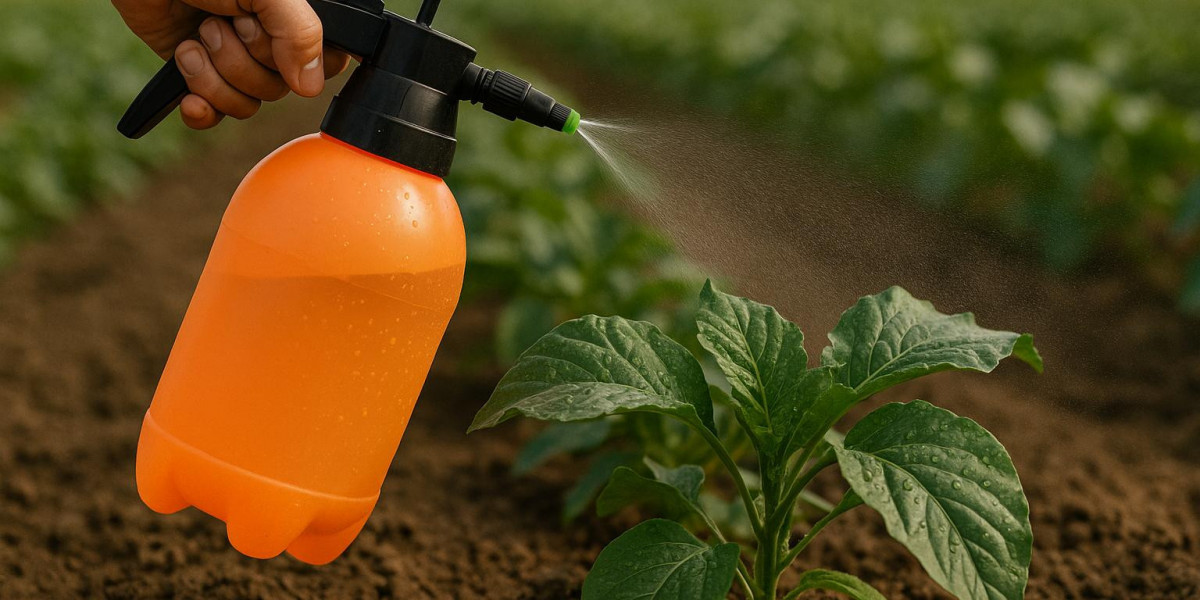Why Spray Efficiency Matters More Than Ever
Crop protection products and foliar feeds are investments. Every time you spray, you’re committing money, time, and labor. If the spray does not reach its target effectively, a portion of that investment is lost. Factors such as droplet size, wind speed, surface tension, and plant surface characteristics can all affect coverage. This is especially critical when controlling pests that hide under leaves, or when nutrients must be absorbed quickly during a critical growth phase.
The Food and Agriculture Organization (FAO) notes that poorly applied pesticides not only waste resources but can also increase environmental risks and lead to pest resistance. That makes spray optimization both a productivity and sustainability issue.
The Role of Sticking and Wetting Agents
One of the simplest ways to improve spray efficiency is by adding sticking and wetting agents to your application. These additives change the physical properties of spray droplets, allowing them to spread more evenly on leaf surfaces and resist being washed away by rain or irrigation.
Farmers who aim for maximum impact often choose to buy sticking/wetting agent products that complement their existing pesticide or nutrient regimen. These agents help ensure active ingredients stay where they are needed—on the crop—long enough to do their job.
How They Work
Sticking agents increase adhesion, preventing droplets from sliding off waxy or hairy leaves. Wetting agents reduce the surface tension of the water in the spray mixture, allowing the liquid to spread over a larger area. Together, they improve both coverage and persistence.
For example, on a cabbage leaf with a natural wax coating, a regular spray might bead up and roll away. Add a wetting agent, and the droplet spreads into a thin film, covering more surface and increasing contact with pests or nutrient-absorbing tissues.
Choosing the Right Agent for Your Crop
Not all sticking and wetting agents are the same. Some are designed for use with fungicides, while others are designed for use with insecticides or foliar fertilizers. The choice depends on crop type, pest pressure, and environmental conditions.
For crops with dense canopies like cotton or soybeans, agents that improve penetration can be beneficial.
For fruits with smooth skins, a stronger sticking formulation may provide better rainfastness.
Selecting the right product can mean the difference between needing to reapply after a light rain and maintaining protection for days.
Application Timing and Conditions
Even the best spray mix can fail if applied under poor conditions. Early morning or late afternoon applications are often ideal to reduce evaporation and drift. In windy conditions, droplet size and spray direction must be adjusted to ensure target coverage.
Rainfastness is another critical factor. Some agents can make sprays resistant to light rainfall within an hour of application, while others require a longer drying period. Understanding these intervals ensures the active ingredient has enough time to work.
“It’s not just what you spray—it’s how well it stays.”
Spray Technology Meets Chemistry
Modern sprayers, from handheld units to GPS-guided boom sprayers, have advanced to deliver precise application rates and droplet sizes. When combined with the right adjuvants, these tools can significantly improve efficacy.
For instance, a well-calibrated nozzle paired with a wetting agent ensures droplets hit and spread across the intended surface. This reduces the risk of missed spots where pests can survive and reproduce.
The University of Minnesota Extension notes that optimizing spray equipment settings can reduce chemical use by up to 15% while maintaining or improving pest control. That’s a direct boost to both efficiency and profitability.
Environmental and Economic Benefits
Better spray efficiency reduces runoff and drift, minimising the environmental footprint of crop protection products. It also reduces the total volume of chemicals needed, lowering input costs. In large-scale operations, even a 5% reduction in chemical use can translate into thousands of dollars in savings per season.
Moreover, improved spray coverage can lower the number of reapplications needed. This not only saves on product costs but also reduces labour and equipment wear.
Addressing Common Myths
Some growers believe that sticking and wetting agents are only necessary in certain climates or for high-value crops. In reality, any crop that benefits from foliar applications can see improved results. Another misconception is that these agents are costly extras—when in fact, their cost is often offset by reduced product waste and better results.
FAQs
Do sticking/wetting agents work with all pesticides?
Most are compatible, but always check the product label for compatibility and mixing instructions.
Can they be used in organic farming?
Some formulations are approved for organic use. Certification bodies often list approved products.
Will they harm beneficial insects?
Most modern agents are formulated to minimize non-target effects, but timing and method of application remain important.
Do they increase the risk of crop burn?
If used as directed, the risk is minimal. Overdosing or mixing with incompatible products can cause damage.
How long do the effects last?
It varies by product, weather, and crop type. Rainfastness claims should be checked on the label.
A Small Step Toward Big Yield Gains
Spray efficiency might not sound as groundbreaking as new seed genetics or precision irrigation, but it’s a lever that can be pulled immediately, often with quick results. By improving how sprays interact with plant surfaces, sticking and wetting agents help ensure that every droplet counts—delivering better pest control, faster nutrient uptake, and longer-lasting protection.
This is the kind of small change that compounds over time: healthier plants, fewer reapplications, lower costs, and higher yields. In the fast-evolving world of agriculture, where margins are tight and resources are precious, this modest adjustment could be one of the smartest investments you make this season.








